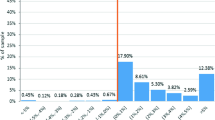Abstract
The recent literature advances a hypothesis that addresses the possibility of mortgage redlining caused by a dynamic information externality in property appraisals and mortgage lending. In particular, Lang and Nakamura (1993) hypothesize that because property appraisals depend on past transactions, appraisals in neighborhoods where transactions were infrequent tend to be less precise. The greater uncertainty about house valuation in such neighborhoods can lead mortgage lenders to impose stringent requirements on borrowers. Lang and Nakamura's article, like most economic analysis of property appraisals, is theoretical. Using a sample of mortgages purchased by Fannie Mae, we present preliminary research results that cast doubt on appraisal behavioral rules such as weighted averages or backward-looking expectations on which Lang and Nakamura and other theoretical studies are based. Instead, our results refocus attention on the moral hazard issues of appraisal. We find that in more than 80 percent of the cases, the appraisal is between 0 and 5 percent above the transaction purchase price, in only 5 percent of the cases is the appraisal lower, and in 30 percent of the cases, the appraisal and transaction prices are identical. It would take a strong statistical model to generate such occurrences. Our resutls also indicate that appraisal outcomes are used as a risk factor with different weights for loans with different characteristics (loan-to-value ratios and house prices). The results suggest that more empirical investigation of appraisal practices be conducted to verify the validity of conventional wisdom embedded in theoretical studies, and we offer an econometric framework toward this end.
Similar content being viewed by others
References
Can, A. “Specification and Estimation of Hedonic Housing Price Models,” Regional Science and Urban Economics 22:3 (1991), 453–474.
Geltner, D. “Temporal Aggregation in Real Estate Return Indices,” Journal of the American Real Estate and Urban Economics Association 21:2 (1993), 141–166.
Gyourko, J., and R. Voith. “Local Market and National Components in House Price Appreciation,” Journal of Urban Economics 32:1 (1992), 52–69.
Lang, W.W., and L.I. Nakamura. “A Model of Redlining,” Journal of Urban Economics 33:2 (1993), 223–234.
Lo, A.W., and A.C. Mackinlay. “Data-Snooping Biases in Tests of Financial Asset Pricing Models,” Review of Financial Studies, 3:3 (1990), 431–467.
Quan, D.C., and J.M. Quigley. “Inferring an Investment Return Series for Real Estate from Observations on Sales,” AREUEA Journal 17:2 (1989), 218–234.
Quan, D.C., and J.M. Quigley. “Price Formation and the Appraisal Function in Real Estate Markets,” Journal of Real Estate Finance and Economics 4:2 (1991), 127–146.
Quercia, R.G., and M.A. Stegman. “Residential Mortgage Default: A Review of the Literature,” Journal of Housing Research 3:2 (1992), 341–379.
Author information
Authors and Affiliations
Rights and permissions
About this article
Cite this article
Cho, M., Megbolugbe, I.F. An empirical analysis of property appraisal and mortgage redlining. J Real Estate Finan Econ 13, 45–55 (1996). https://doi.org/10.1007/BF00174550
Issue Date:
DOI: https://doi.org/10.1007/BF00174550




